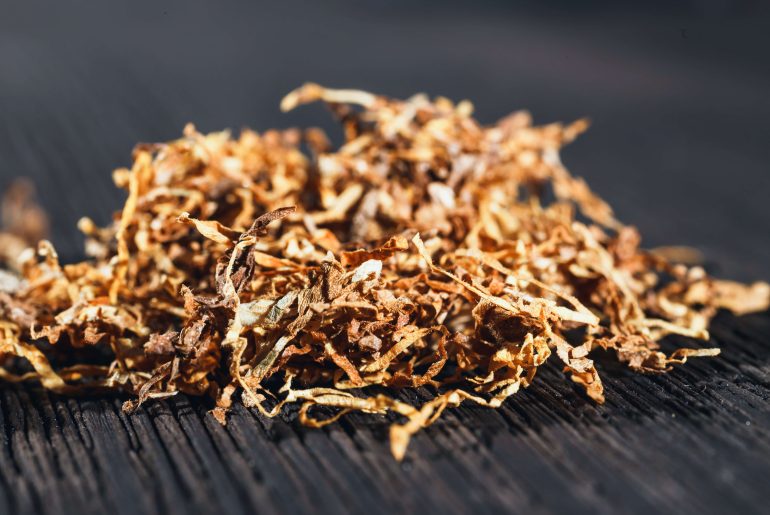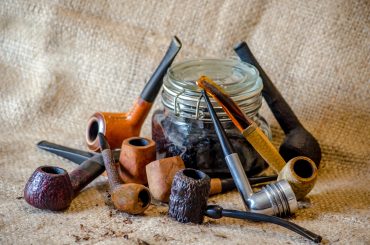When I age my favorite tobaccos, I’ve always fancied myself as a scientist or alchemist unlocking magic. Aging tobacco is a remarkable process that continues to intrigue and captivate fans across the globe. Today, I’ll share my thoughts, things I have learned, and the introductory chemistry behind aging tobacco.
Often, the aging process is called ‘cellaring.’ In its basic form, you’re sending your tobacco on a journey to be transformed into an extraordinary final product. This extensive article will delve into the science behind tobacco aging — from the initial composition of tobacco leaves to the meticulous art of cellaring and why it all matters to pipe smokers. So, prepare your favorite pipe, settle in, and let’s explore the fascinating world of tobacco aging.
Unveiling the Alchemy of Aging Tobacco
Before we can get into the chemistry, remember the leaves are the plant’s powerhouse, where food is produced through photosynthesis. Various chemical processes make sugars and nutrients to keep the plant healthy.
Before delving into the aging process, let’s dissect the composition of tobacco leaves. Two primary types of tobacco are commonly used in pipe smoking. Virginia tobacco and Oriental tobacco each offer unique characteristics. These leaves contain various natural components, including sugars, oils, and volatile compounds, significantly contributing to tobacco flavor.
The aging process typically begins after the tobacco leaves have been cured and dried. The tobacco is then stored in a controlled environment, such as a cellar or a humidor. During the aging process, the tobacco undergoes several chemical and biological changes, including fermentation, oxidation, and the Maillard reaction. Let’s break each one down below.
Fermentation
Fermentation is a process that breaks down complex carbohydrates into simpler sugars and alcohols. But you won’t see anything bubbling, unlike wine, beer, or whiskey. When tobacco ferments, it is controlled ‘rot,’ but without spoiling or turning into a gooey mass. Humidity control is essential during this step.
Fermentation is responsible for developing many complex flavors in aged tobacco. Inside those tobacco leaves are sugars, the building blocks of flavor. When you first get your tobacco, those sugars may make it taste sharp or harsh.
Over time, as you store and age pipe tobacco, tiny microbes go to work. They feast on those sugars, slowly changing the tobacco’s character. It’s like a chef simmering a stew to perfection.
As the microbes do their thing, the harshness of the tobacco fades away. Microbes smooth the rough edges and blend the flavors, creating a mellow and complex tobacco. It’s akin to fine wine aging in a cellar or cheese maturing over time.
Fermentation is the key ingredient that elevates pipe tobacco from ordinary to exceptional. It gives aged tobacco a smooth, rich, layered flavor that pipe enthusiasts cherish. So, when you savor a bowl of well-aged tobacco, you taste the delicious results of nature’s slow and steady culinary artistry.
Oxidation
Oxidation is a chemical process that occurs when tobacco is exposed to oxygen. Oxidation can help mellow young tobacco’s harshness and develop new flavors.
Oxidation is a natural chemical process that occurs when pipe tobacco comes into contact with oxygen from the air. It plays a crucial role in aging pipe tobacco. As the tobacco interacts with the air over time, oxygen slowly penetrates the leaves, transforming flavors.
Like aging wine or cheese, this process can mellow out harsh notes in the tobacco, resulting in a smoother and more complex taste. But, achieving the right oxygen balance is essential. Too much can spoil tobacco, while too little inhibits aging. Oxidation allows pipe smokers to enhance tobacco flavors by letting it breathe and evolve. You’re creating a more enjoyable and nuanced smoking experience with carefully controlled conditions.
The Maillard Reaction
In pipe tobacco, the Maillard reaction is a chemical process that occurs between amino acids (found in proteins) and sugars. The reaction is responsible for developing many of the rich, nutty flavors of aged tobacco.
The Maillard reaction is a complex process, but it can be simplified as follows:
- Amino acids and sugars react to form a compound called glycosylamine.
- The glycosylamine breaks down into other compounds, including aldehydes, ketones, and acids.
- These compounds react to create new flavors and aromas.
The Maillard reaction is accelerated by heat, so it is more likely to occur in aged tobacco that has been fermented or cured at high temperatures.
Here is a simple analogy to help you understand the Maillard reaction:
Imagine you are baking a cake. The cake batter contains amino acids (from the eggs and flour) and sugars. When you bake the cake, the heat causes the amino acids and sugars to react, forming new flavors and aromas. This is the same basic process during the Maillard reaction in tobacco.
The Maillard reaction is not unique to tobacco. It also occurs in other foods and beverages, such as coffee, chocolate, and bread. The Maillard reaction is responsible for many of the flavors and aromas we enjoy in our food and drinks.
Other Chemical Processes
Besides fermentation, oxidation, and the Maillard reaction, several other chemical processes are thought to play a role in tobacco aging. These include:
- Decarboxylation: Decarboxylation is a chemical process that removes carboxyl groups from organic molecules. Decarboxylation is responsible for developing some aromatic flavors in aged tobacco.
- Esterification: Esterification is a chemical reaction that combines an alcohol with an acid to form an ester — a flavorful chemical compound. Remember fermentation? Tiny amounts of alcohol are produced during the fermentation stage. Esters are responsible for many fruity and floral flavors in aged tobacco.
- Hydrolysis: Hydrolysis is a chemical reaction that breaks down organic molecules using water. Hydrolysis is responsible for developing some savory flavors of aged tobacco.
Remember, we’ve broken the processes down into their individual parts. In reality, they coincide.
The Impact of Aging on Tobacco Flavor
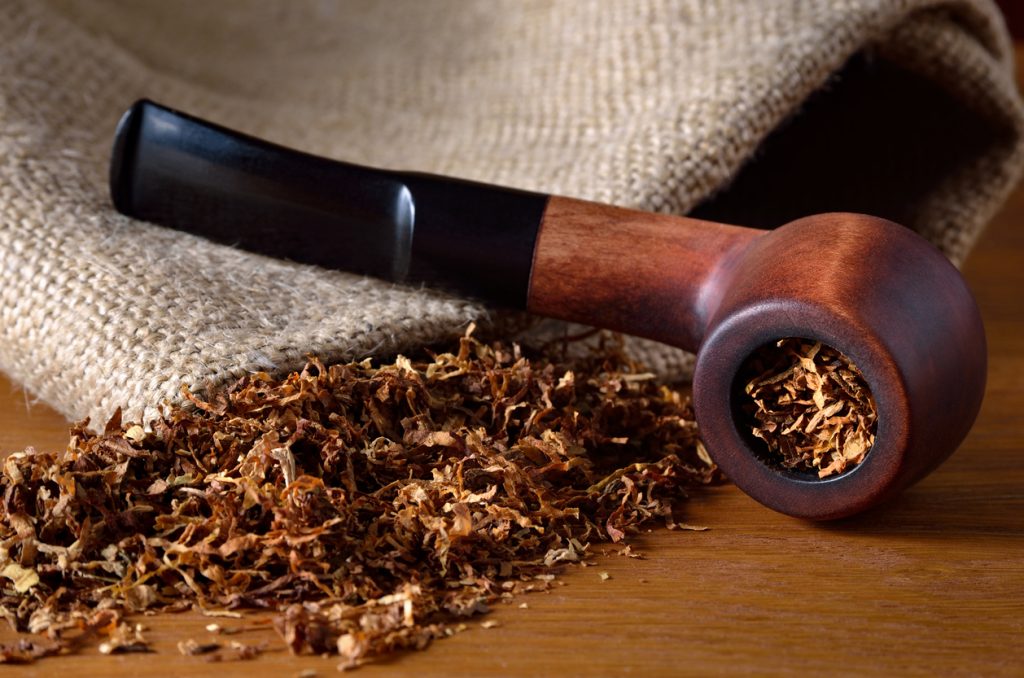
The aging process has a significant impact on the flavor of tobacco. Aged tobacco is typically smoother and more mellow than young tobacco. It has a more complex flavor profile with fruit, nuts, and spice notes.
The impact of aging on tobacco flavor varies depending on the type of tobacco and the aging conditions. But, in general, aged tobacco is more flavorful than young tobacco. If you tried to smoke fresh tobacco leaves, it could kill you because of the high concentrations of ammonia and nicotine. Also, it would taste like something you found in your garden… Not recommended.
The Benefits of Aging Tobacco
There are many benefits to aging tobacco. Aged tobacco is smoother and more mellow than young tobacco because the ammonia is removed from the leaves. It also has a more complex flavor profile. Additionally, aged tobacco can have a longer shelf life than young tobacco.
Aging Pipe Tobacco: A Chemical Metamorphosis
To grasp the intricacies of tobacco aging, it’s essential to recognize that it’s not a mere matter of passively storing tobacco for a few years. Instead, a complex chemical metamorphosis unfolds within the tobacco leaves’ fibers. This transformation is primarily driven by the interaction between tobacco’s inherent components and the environmental conditions.
The Role of Sugar Content and Fermentation
One crucial element in the aging equation is the sugar content within the tobacco leaves. Remember those tiny microbes doing all the hard work of transforming your tobacco into a delicious product? They need sugar to survive and do their job.
As tobacco ages, the microbes feast on the leaves’ natural sugars during the fermentation. This natural breakdown of sugars is where chemical reactions over time lead to flavor enhancement and complexity.
The Maturation of Flavors
As the aging process unfolds, the flavors within the tobacco leaves mature and evolve. The initial harshness and pronounced notes mellow out. At the same time, the overall flavor profile of the blend becomes smoother and more intricate. A symphony of flavors is gradually emerging, and all the parts harmonize in a refined tobacco experience.
The Art and Science of Cellaring
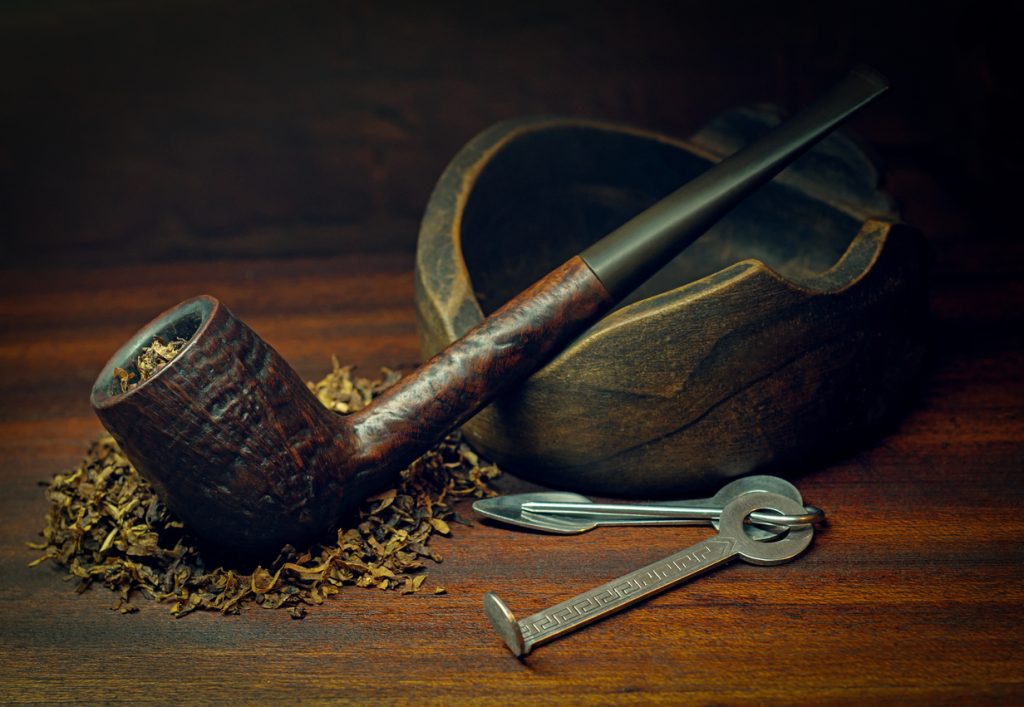
To successfully age pipe tobacco, creating the ideal environment is paramount. Cellaring tobacco is a personal and finely tuned process. Enthusiasts like tinkering and developing their own methods. Yet, certain universal principles must be followed to ensure a successful aging journey:
1. Embrace the Darkness: Tobacco should be stored in a dark environment. UV light is harmful to tobacco and can degrade the flavor and aroma.
2. Temperature Stability: Maintaining a consistent temperature is paramount. Fluctuations in temperature can cause the tobacco to expand and contract. Nasty elements like bugs or wild yeast may enter the container and spoil your blend when the seal is compromised. The ideal temperature is between 50 and 59 degrees Fahrenheit (10-15ºC). Anything lower will stop the process while increasing might encourage mold growth.
3. Meticulous Humidity Control: Proper humidity levels are essential. Too much moisture can foster mold growth, while too little can result in the drying out of the tobacco. The ideal humidity is between 50% and 75% relative humidity. If you’re struggling to maintain the moisture, use Boveda humidity packs.
4. Airtight Containers: Tobacco must be housed in airtight containers. Mason jars or sealed tins will prevent exposure to air and moisture, which could disrupt the aging process. A cigar humidor is another excellent option, but don’t store cigars with your pipe tobacco. No, a tupperdor isn’t a good option. The tobacco may stain your container, and there might be unwanted chemical interactions.
If you need extra storage for aging your tobacco, consider a Coolidor. These operate on the same principles as Tupperdors but are designed for larger capacities.
Because they are constructed from coolers, Coolidors provide thermal insulation. This will be helpful if your storage area, such as a basement, experiences temperature fluctuations.
Coolidors are an excellent choice as they safeguard your tobacco from UV light. They are also easy to maintain while offering the optimal internal environment.
5. Vacuum Sealing: Some pipe smokers go the extra mile by vacuum sealing their tobacco before placing it in airtight containers. I wouldn’t say I like this step. Exposure to air can be beneficial for tobacco aging. Still, the extent of its impact depends on the degree of exposure.
When tobacco is vacuum-sealed, the aging and fermentation processes still occur. But the conversion rate is much slower and less noticeable than tobacco exposed to more air — either in its original tin or another container. This difference arises because the microbes need oxygen to thrive and sustain fermentation. Ultimately, vacuum sealing slows down the fermentation process.
The Magic of Cellaring: Why It Works Wonders
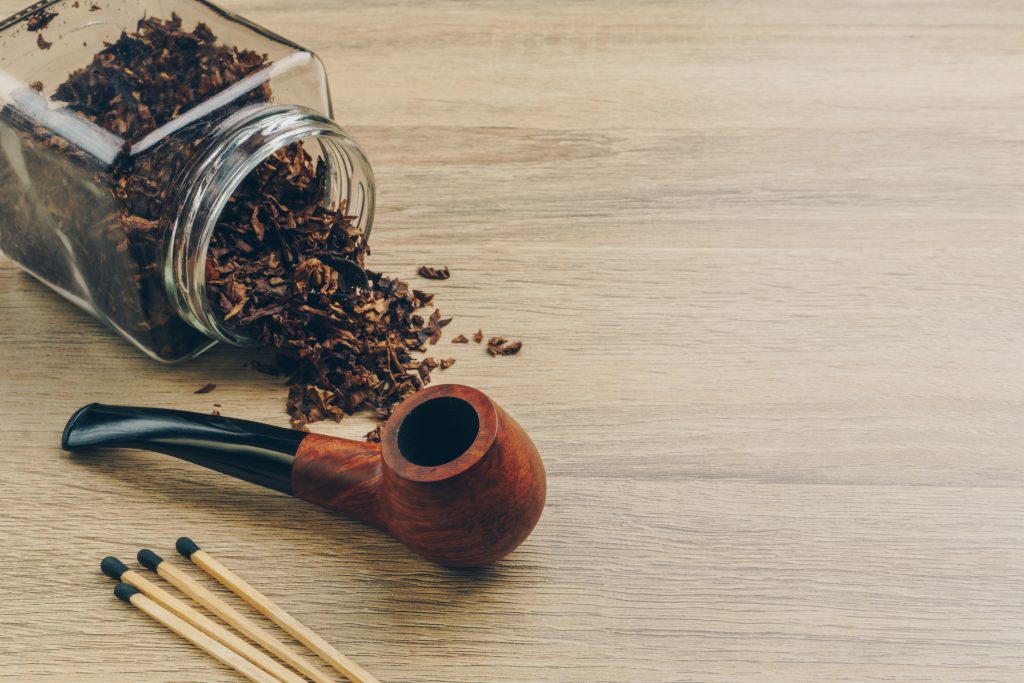
The secret to the magic of aging tobacco lies in maintaining the aging environment.
Crucial Conditions for Successful Tobacco Cellaring
The absence of direct sunlight and protection from UV light are pivotal in preserving the tobacco’s unique flavors. Additionally, the airtight seal ensures that the aging process remains undisturbed and uncompromised.
The Prowess of Tobacco Blends
Different tobacco blends age in distinct ways. For example, English blends, known for their rich and complex flavor profiles, are renowned for their aging potential. But, most tobaccos can benefit from aging. My favorite tobaccos to age are Latakia, English blends, and Oriental tobaccos. Virginia is also an excellent tobacco for long-term cellaring and aging.
A Personal Journey
Aging pipe tobacco is a personal and often contemplative process. Every pipe smoker brings their unique approach, preferences, and patience. Some savor the gradual transformation of tobacco over several years. Others prefer immediate enjoyment. The path taken depends on individual taste and the ability to exercise patience. Remember to rotate your stock: old tins to the front and new ones at the back.
Tobacco Blends When Aging and Cellaring
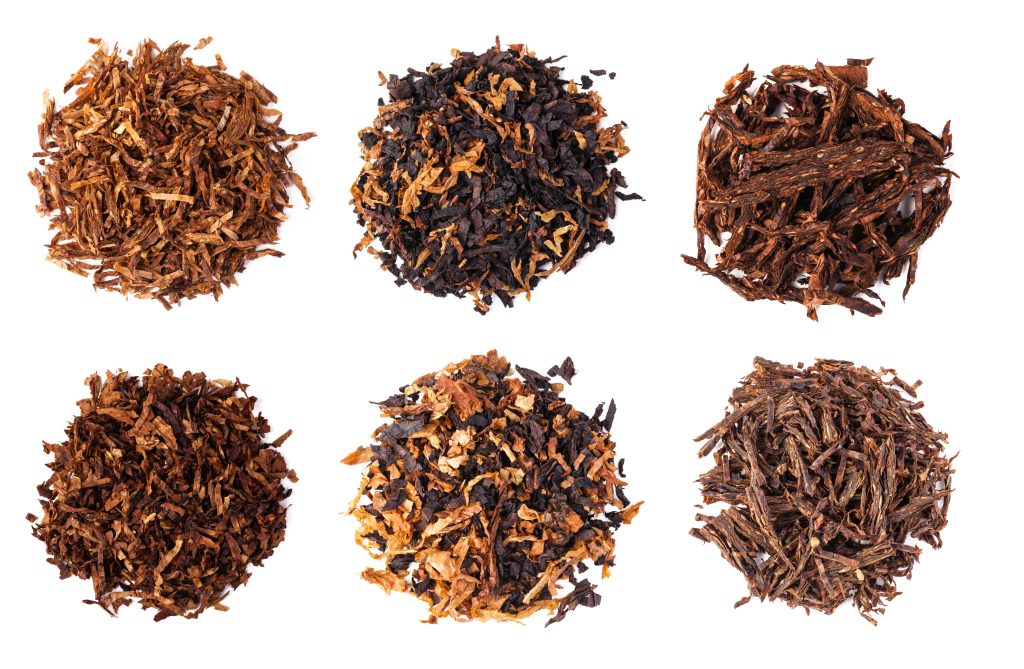
One of the most significant advantages of aging and preserving tobacco is its extended shelf life. Well-aged tobacco can be stored for decades without compromising quality. It lets you enjoy your favorite brands if they disappear from the market.
The significance of aging tobacco becomes apparent when a cherished blend, like Sobranie Balkan, is discontinued. Those who have diligently stored tins or jars of the mixture can continue to relish it long after it has vanished from the market. This practice has created a vibrant trade in aged and rare tobacco blends among collectors and enthusiasts.
Conclusion
In the realm of pipe smoking, the science of tobacco aging is both an art and a journey of self-discovery. The careful selection of blends, optimal aging conditions, and the patience to await the alchemical transformation all contribute to crafting remarkable tobacco experiences. Whether you are a seasoned pipe smoker or a newcomer to this captivating world, comprehending the science of tobacco aging can enrich your enjoyment and deepen your appreciation of pipe tobacco.
The next time you savor a bowl of well-aged tobacco, remember it’s not just about smoking. It is about experiencing the rich tapestry of flavors that time has woven into each leaf. Happy Smoking!

